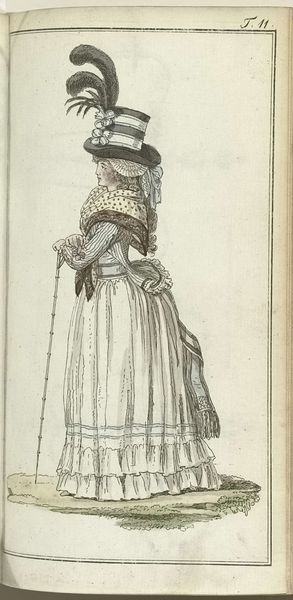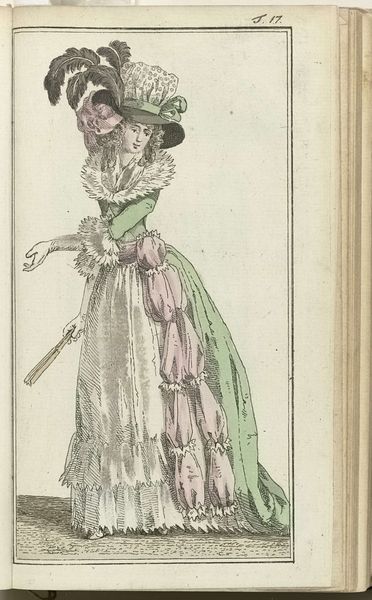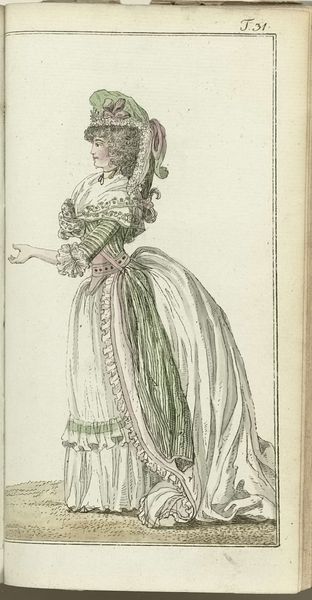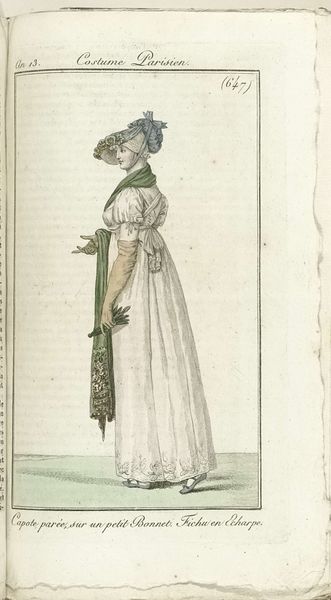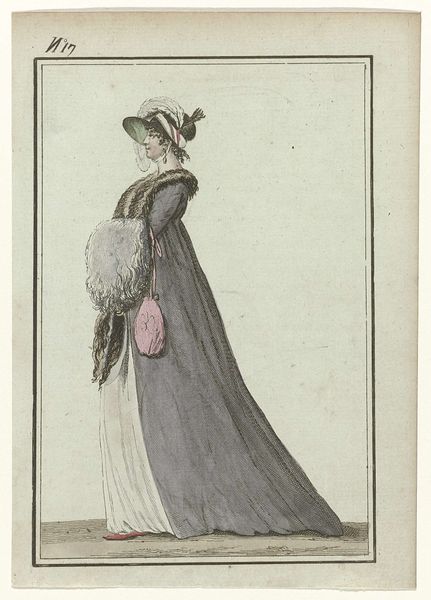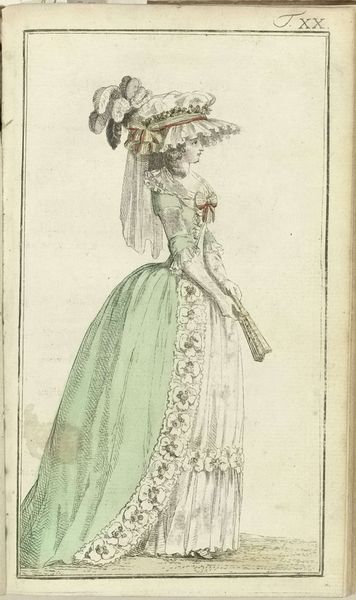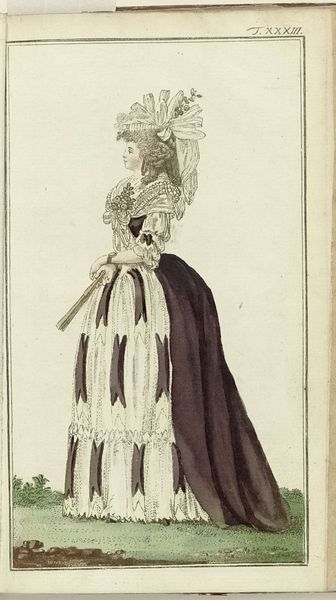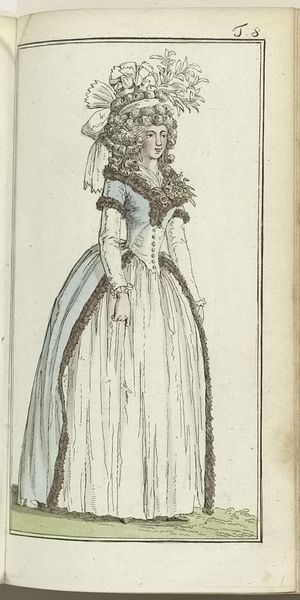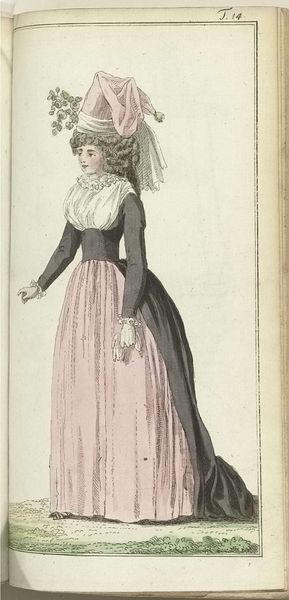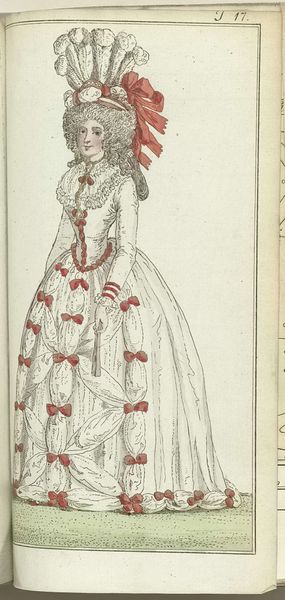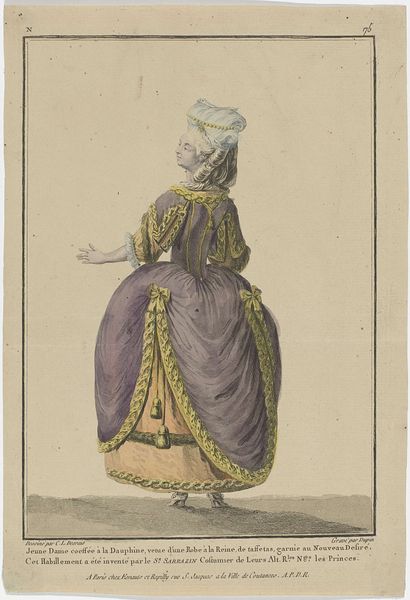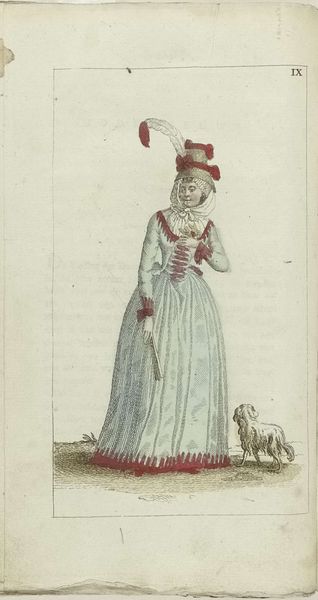
Copyright: Rijks Museum: Open Domain
Editor: This is "Journal des Luxus und der Moden 1788, Band III, T.7," created in 1788 by Friedrich Justin Bertuch. It looks like a print on paper, using engraving, pen, and coloured pencil. The towering hat immediately strikes me. How do you interpret this work? Curator: Beyond the aesthetic, consider the historical context. Fashion plates like this were tools. They weren’t merely reflecting trends, but actively constructing them. How might this image participate in shaping and controlling gender roles and class distinctions? Editor: So, it’s less about documentation and more about prescription? The woman's pose, the almost aggressive angle of her pointed finger… it does feel performative. Curator: Exactly! Think about the "Journal" itself – a luxury publication aimed at a specific demographic. What does this tell us about access, consumption, and the visual language used to maintain social hierarchies? How does this contribute or challenge notions of female agency at the time? Editor: It's interesting to consider it not just as a pretty picture, but as a commentary on power. Is it subtly enforcing certain expectations of women? Curator: Precisely. By visually codifying ideals, it participates in a broader discourse on acceptable identities. And let’s consider the Romanticism tag, too. What aspects of Romanticism do you see at play? Is it critiquing society by idealizing a certain femininity, or is it reinforcing stereotypes? Editor: This makes me think about how even seemingly innocent images can carry so much cultural weight. It's more than just a fashion plate; it’s a social document. Curator: Absolutely. This is where art history becomes a tool for understanding the complexities of the past and the continued relevance of these issues in the present. Editor: I will definitely look at similar fashion plates with fresh eyes now, recognizing how they actively shaped the world they depicted.
Comments
No comments
Be the first to comment and join the conversation on the ultimate creative platform.
